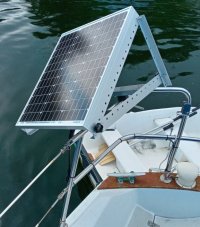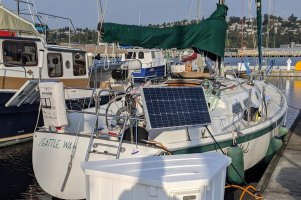TK, Yes…I realize that one 100 watt panel will probably not meet all of my needs but that is not really my intent. I want to supplement charging by shore power/engine power to extend my time at anchor. I don’t want to replace shore power/engine power. To do that I’d need at two or more 100 watt panels that would need to be permanently mounted and that’s something I’d like to avoid because that what I don’t need. Most of the time I day sail. The rest I go out for about a week or more stopping at marinas and anchoring. I’d like to anchor a bit more. I’m leaning more now towards buying one 100 watt flexible panel that can be easily stored below when not in use. Then I might buy a second one and deploy them around different parts of the boat as the sun direction changes. I suppose I could even add a third or more as long as the controller can handle it. So the two big issues for me are flexibility and storage of the panels. As for battery power I have, or had, two large group 24 “house” batteries that were 7 years old and are being replaced this spring. Then there is a third smaller starter battery under that Nav station seat used solely to start the engine. The house and starter batteries each have their own 120 volt chargers. All three batteries are control with two large battery switches which, depending on how they’re set, can deliver power to the boat or engine from all three, from just one of the batteries or a combination of either one of them. The system was designed and built by the previous owner and it works well. The other purpose for having temporary solar panels is for use in the winter months when the boat is on the hard. Every other year I have the boat pulled that have the bottom inspected and painted, along with any other required maintenance. While On the hard the boat cannot be plugged in the keep the batteries charged. The temporary panel(s) can then be laid out on the deck, bimini or hung to take advantage of the sun’s angle depending on where the boat is placed.




